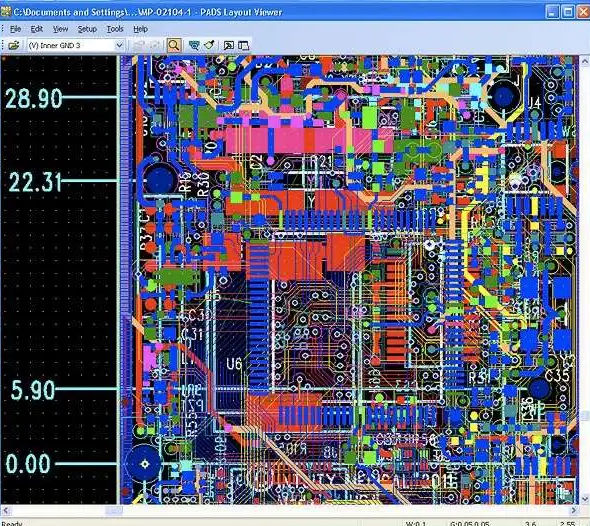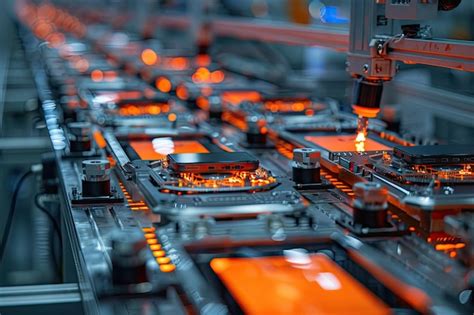PCB Design for Power Amplifiers: Key Considerations and Best Practices
Introduction to PCB Power Amplifiers
Printed Circuit Board (PCB) power amplifiers represent a critical component in modern electronic systems, serving as the backbone for signal amplification across numerous applications. From audio systems and radio communications to medical equipment and industrial automation, PCB power amplifiers enable the efficient boosting of electrical signals while maintaining signal integrity.
A power amplifier PCB differs significantly from standard circuit boards due to its need to handle higher currents, manage substantial heat generation, and maintain signal quality under demanding operational conditions. The design and implementation of these specialized PCBs require careful consideration of numerous factors including thermal management, component selection, layout optimization, and electromagnetic compatibility.
This comprehensive article explores the essential aspects of PCB design for power amplifiers, providing engineers and designers with practical insights into creating robust, efficient, and reliable amplification circuits. We’ll examine the fundamental principles, material selection criteria, layout strategies, and testing methodologies that contribute to successful power amplifier PCB implementation.
Fundamental Principles of Power Amplifier PCBs
Understanding Power Amplifier Classes
Power amplifiers are categorized into different classes (A, B, AB, C, D, etc.) based on their operation characteristics and efficiency levels. The choice of amplifier class significantly impacts the PCB design requirements:
- Class A Amplifiers: Simple design but low efficiency (20-30%) requires careful thermal management
- Class AB Amplifiers: Common compromise between efficiency (50-70%) and linearity
- Class D Amplifiers: High efficiency (90%+) but require careful EMI management
- Class G/H Amplifiers: Variable supply designs that need sophisticated power routing
Key Performance Parameters
When designing PCB power amplifiers, several critical parameters must be considered:
- Output Power: Determines trace widths and component ratings
- Efficiency: Impacts thermal design and power supply requirements
- Bandwidth: Influences layout to maintain frequency response
- Total Harmonic Distortion (THD): Affected by grounding and component placement
- Signal-to-Noise Ratio (SNR): Dependent on proper shielding and routing
Impedance Considerations
Proper impedance control is essential for power amplifier PCBs:
- Input/output impedance matching (typically 50Ω or 75Ω systems)
- Transmission line effects at high frequencies
- Minimizing parasitic capacitance and inductance
- Maintaining consistent characteristic impedance throughout signal paths

Material Selection for Power Amplifier PCBs
Substrate Materials
The choice of PCB substrate material significantly impacts the performance of power amplifiers:
- FR-4: Standard material for low-frequency applications
- Cost-effective
- Limited high-frequency performance
- Moderate thermal conductivity
- High-Frequency Laminates (Rogers, Taconic):
- Low dielectric loss at RF frequencies
- Stable dielectric constant across temperature
- Higher cost but essential for RF power amps
- Metal Core PCBs:
- Excellent thermal dissipation
- Used for high-power applications
- Aluminum or copper core options
- Ceramic Substrates:
- Exceptional thermal performance
- Used in extreme high-power applications
- More fragile and expensive
Copper Weight Selection
Proper copper thickness is crucial for power amplifier PCBs:
- Standard 1oz (35μm) copper for signal layers
- 2oz (70μm) or heavier for power carrying traces
- Plated-up options for very high current paths
- Consider skin effect at high frequencies
Surface Finishes
The PCB surface finish affects both performance and reliability:
- ENIG (Electroless Nickel Immersion Gold): Good for RF applications
- Immersion Silver: Excellent high-frequency performance
- OSP (Organic Solderability Preservative): Cost-effective but less durable
- Electrolytic Hard Gold: For high-reliability applications
PCB Layout Considerations for Power Amplifiers
Power Distribution Network Design
An optimized power distribution network is critical for power amplifier performance:
- Decoupling Strategy:
- Multiple capacitor values (decade spacing)
- Proper placement near power pins
- Low-ESR/ESL capacitors for high-frequency decoupling
- Power Plane Design:
- Dedicated power planes when possible
- Sufficient copper area for current carrying
- Minimize plane splits in critical areas
- Star Grounding:
- Separate analog, digital, and power grounds
- Single-point connection for ground systems
- Prevent ground loops
Thermal Management Techniques
Effective heat dissipation is essential for power amplifier reliability:
- Copper Pour Techniques:
- Thermal relief connections
- Large copper areas for heat spreading
- Thermal vias to inner layers or heatsinks
- Component Placement:
- Spacing heat-generating components
- Orientation for optimal airflow
- Consideration of thermal gradients
- Heatsink Integration:
- Proper mounting provisions
- Thermal interface materials
- Mechanical stability considerations
Signal Integrity Considerations
Maintaining signal integrity in power amplifier PCBs requires:
- Trace Routing:
- Controlled impedance traces
- Minimize sharp corners (45° or curved)
- Adequate spacing between critical traces
- Shielding:
- Ground planes above and below sensitive traces
- Shield cans for critical components
- Guard traces around sensitive nodes
- Differential Pair Routing:
- Maintain consistent spacing
- Equal length matching when required
- Symmetrical layout
Component Selection and Placement
Active Device Considerations
The selection of active devices (transistors, ICs) drives many PCB decisions:
- Transistor Packages:
- TO-220, TO-247 for discrete power transistors
- SMD packages (DPAK, SOIC) for space-constrained designs
- Flip-chip and wafer-level packages for high-frequency
- Bias Circuitry:
- Proper placement near active devices
- Thermal compensation considerations
- Stable reference voltages
- Matching Networks:
- Input/output matching components
- Harmonic termination networks
- Stability networks
Passive Component Selection
Passive components require careful selection in power amplifier designs:
- Resistors:
- Power rating considerations
- Temperature coefficients
- High-frequency behavior
- Capacitors:
- Voltage ratings with margin
- ESR/ESL characteristics
- Dielectric materials (C0G, X7R, etc.)
- Inductors:
- Saturation current ratings
- Shielded vs. unshielded types
- Q-factor at operating frequency
Placement Strategies
Optimal component placement enhances performance:
- Signal Flow Organization:
- Linear or logical signal progression
- Minimize crossovers and backtracking
- Group related components together
- Thermal Considerations:
- Spread heat-generating components
- Place sensitive components away from heat sources
- Consider airflow patterns
- Manufacturing Constraints:
- Component orientation consistency
- Adequate spacing for rework
- Pick-and-place machine considerations
EMI/EMC Considerations in Power Amplifier PCBs
Radiation Control
Power amplifiers can be significant EMI sources:
- Enclosure Design:
- Proper shielding techniques
- Gasket selection for openings
- Filtered connectors
- Board-Level Shielding:
- Shield cans over critical circuits
- Proper grounding of shields
- Partitioning of board sections
- Clock and Switching Noise:
- Careful routing of clock signals
- Spread spectrum techniques when applicable
- Proper termination of high-speed lines
Conducted Emissions
Preventing noise propagation through power and I/O lines:
- Input/Output Filtering:
- Pi filters for power inputs
- Common-mode chokes
- Feedthrough capacitors
- Grounding Techniques:
- Proper earth grounding
- Isolation transformers when needed
- Ground loop prevention
- Power Supply Decoupling:
- Multi-stage filtering
- Local regulation when possible
- Careful placement of filter components
Testing and Validation of Power Amplifier PCBs
Performance Testing
Essential tests for power amplifier PCBs:
- Frequency Response:
- Small-signal gain across bandwidth
- Roll-off characteristics
- Bandwidth verification
- Power Measurements:
- Output power at compression
- Efficiency calculations
- Harmonic distortion measurements
- Stability Analysis:
- Phase margin measurements
- Load pull testing
- Transient response
Environmental Testing
Ensuring reliability under operating conditions:
- Thermal Testing:
- Thermal imaging under load
- Temperature cycling
- Derating verification
- Vibration and Mechanical Stress:
- Board flex testing
- Component solder joint integrity
- Mechanical shock resistance
- Long-Term Reliability:
- Accelerated life testing
- Continuous operation testing
- Failure mode analysis
Compliance Testing
Meeting regulatory requirements:
- EMC/EMI Testing:
- Radiated emissions
- Conducted emissions
- Immunity testing
- Safety Certification:
- Creepage and clearance verification
- Insulation testing
- Fault condition testing
- Industry-Specific Standards:
- Audio performance metrics
- Wireless communication standards
- Medical or automotive requirements
Advanced Techniques in Power Amplifier PCB Design
Multilayer Board Strategies
Optimizing layer stackups for power amplifiers:
- Layer Arrangement:
- Signal layers adjacent to ground planes
- Dedicated power layers
- Symmetrical stackups to prevent warping
- Via Technologies:
- Through-hole vias for power transfer
- Blind/buried vias for high-density interconnects
- Via-in-pad for thermal management
- Mixed-Signal Layouts:
- Careful partitioning of analog/digital sections
- Cross-layer interference prevention
- Proper ADC/DAC interfacing
High-Frequency Design Techniques
Special considerations for RF power amplifiers:
- Transmission Line Design:
- Microstrip and stripline implementations
- Coplanar waveguide options
- Impedance matching structures
- Parasitic Control:
- Minimizing lead lengths
- Proper component selection for RF
- Layout techniques to reduce stray effects
- EM Simulation:
- Pre-layout modeling
- Post-layout verification
- Coupling analysis
Thermal Simulation and Analysis
Predictive thermal management techniques:
- Computational Fluid Dynamics (CFD):
- Airflow modeling
- Temperature distribution predictions
- Cooling system optimization
- Finite Element Analysis (FEA):
- Mechanical stress analysis
- Thermal expansion considerations
- Vibration modeling
- Thermal Imaging Verification:
- IR camera measurements
- Hot spot identification
- Correlation with simulations

Manufacturing and Assembly Considerations
Design for Manufacturing (DFM)
Ensuring producibility and yield:
- Tolerancing:
- Accounting for manufacturing variations
- Proper annular ring specifications
- Mask and solder paste considerations
- Panelization:
- Efficient board array layouts
- Breakaway tab design
- Fiducial marker placement
- Testability:
- Test point accessibility
- Built-in self-test features
- Boundary scan implementation
Assembly Processes
Optimizing for power amplifier production:
- Soldering Techniques:
- Reflow profile optimization
- Wave soldering considerations
- Selective soldering for mixed-tech boards
- Component Procurement:
- Lead time considerations
- Alternative parts planning
- Obsolescence management
- Quality Control:
- Automated optical inspection (AOI)
- X-ray inspection for hidden joints
- Functional testing procedures
Future Trends in Power Amplifier PCB Design
Emerging Technologies
Innovations impacting power amplifier PCBs:
- Wide Bandgap Semiconductors:
- GaN and SiC device integration
- Higher frequency capabilities
- Improved efficiency characteristics
- Additive Manufacturing:
- 3D printed electronics
- Embedded component technology
- Novel substrate materials
- Advanced Packaging:
- System-in-Package (SiP) solutions
- Heterogeneous integration
- Chiplet-based designs
Design Methodology Evolution
Changing approaches to power amplifier development:
- AI-Assisted Design:
- Automated layout optimization
- Machine learning for component selection
- Predictive performance modeling
- Digital Twins:
- Virtual prototyping
- Real-time performance monitoring
- Predictive maintenance integration
- Sustainable Design:
- Eco-friendly materials
- Energy efficiency optimization
- Recyclability considerations
Conclusion
Designing PCBs for power amplifiers requires a multidisciplinary approach that balances electrical performance, thermal management, mechanical constraints, and manufacturability. By understanding the fundamental principles, carefully selecting materials and components, implementing optimal layout strategies, and employing thorough testing methodologies, engineers can create power amplifier PCBs that meet demanding performance requirements while ensuring reliability and efficiency.
As technology continues to advance, power amplifier PCB designers must stay abreast of new materials, components, and design techniques. The integration of wide bandgap semiconductors, advanced packaging solutions, and AI-assisted design tools promises to further enhance the capabilities of power amplifier circuits while addressing emerging challenges in thermal management, power density, and signal integrity.
Successful power amplifier PCB design ultimately depends on attention to detail, systematic analysis, and iterative optimization. By applying the principles and practices outlined in this article, designers can develop robust power amplifier solutions that push the boundaries of performance while meeting the ever-increasing demands of modern electronic systems.







